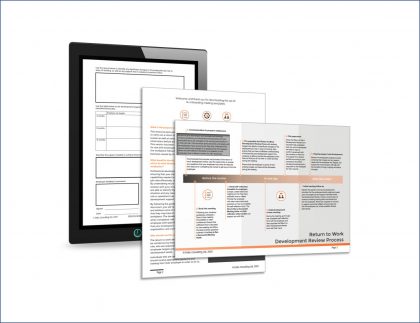As I sit here writing this, the UK government has just announced a 3-week extension to the lockdown for Covid-19. This extension was to be expected, however still brings with it a range of emotions that will affect everyone in different ways. For some it will bring anxiety, for some it will bring fear and for others it will even bring joy, knowing that they are safe and can spend some more time with their immediate family.
In news reports I continue to see the term novel virus, and it has struck me that in this instance this not only refers to the fact that we have never seen this virus before, but also the novel impact that it has had on society and our ways of working. Up until a few months ago, no one would have thought that working from home would become our new normal, or that the unemployment rate would increase to an expected 4.7% in 2020 (although not nearly as bad as in the US, where nearly 22 million are now unemployed). And so, in these novel times, I have been giving some thoughts to how employers can support and engage with their employees, helping them to maintain communication, motivation and where possible, productivity based upon their current outlook on our situation.
The anxious employee
Mental Heath UK term anxiety as a persistent feeling of worry, fear and nervousness, which given the current circumstances is very understandable. I do not claim to be an expert on mental health, but if you have employees that are experiencing anxiety towards the current situation, anything you can do to help manage or reduce these anxiety levels will be positive and appreciated. Removing the anxiety they place on their job security is a part of this, including employees that are currently furloughed. I know that employers can make no promises, especially in these times, but open communication is the key here. Provide regular updates to you employees with what is going on with the business. Regular updates help to provide the employee with a form of structure. In addition, and where possible, try to keep them engaged in their work through regular contact with line management and co-workers, ensuring that you provide them with tasks that keep them feeling engaged and meaningful. Through the updated furlough guidance, the government clarified that furloughed employees can still undertake training, as long as they are not providing services to, or generating income for, or on behalf of their organisation. So, maintain interaction through training where possible, specifically some well-directed and meaningful eLearning that is easy to access and will develop their skill set ready for their return to normal working.
The disengaged employee
Working from home is not easy. There are many distractions and the environment is not often conducive to productivity. This can lead to a reduction in productivity and the employee disengaging with their work. Again, communication is the key here, however ensuring that the work is sufficient enough to maintain their attention and focus is important. As the employer you should understand the strengths of your individual employees, and how best to engage them in their working activities, (i.e., what are their motivating factors), so use this knowledge to provide them with the key tasks you know will get the best from them. They may, however, be disengaged due to the added stress of trying to balance workload with caring responsibilities. Take this into consideration and don’t penalise because of this. Look at how you can support that person to manage both responsibilities (looking at what is realistic for them to achieve).
Maintain regular contact with their line manager and co-workers, making sure to keep them to account on their agreed outputs, which takes into account any caring responsibilities. Importantly, make sure that their efforts are rewarded. This may be as simple as a thank you or it could be monetised, but the employee is more likely to remain engaged if they know their efforts will be recognised. Finally, focus on outputs, not time spent. Micro-managing and forcing individuals to complete a time sheet can result in creative time sheet filling. By focusing on objectives, the employee knows what they need to do and by when, and they can own this.
The opportunistic employee
Yes, these do exist! There will be people that see the opportunity that exists to them on the other side of this pandemic and will take the current situation as an opportunity to improve their current skill set and to make themselves stand out. Make the most of this. Support their current motivation by providing them with a meaningful workload, including activities that will allow them to develop and show their capabilities. Training will also be a fantastic tool for supporting these individuals. Agree with the employee where they and the business would like to see them develop create a plan around how they are going to achieve this. Identify the training they can do that will facilitate this development and monitor their progress. All the while, identify where this person will be in the business once we get back to some form of normality; Are they a good candidate for line management, could they be used as a mentor for others, or could they bring value to another department completely? Having plans for this as a business will ensure you can make the most of their skill set sooner rather than later and will help maintain that employee’s motivation.
Each employee and each business will take a different view of their current circumstances and will be affected differently as a result. As such, how the employer interacts with their employees is crucial, now more so than ever. However, as this article has shown, there do exist opportunities to achieve a positive outcome to our current situation through great communication, planning and knowing the capabilities of your staff. Doing this now will put your organisation and its employees in a really strong position when we come out of the other side.

Do you have employees returning from furlough?
Carrying out a return to work development review with your employees will help you to ensure that they have the skills and capabilities that they need now to perform their job roles.
Our return to work development review template will support you to carry out this activity to the benefit of the returning employee and the organisation.
Access Return to Work Development Review template